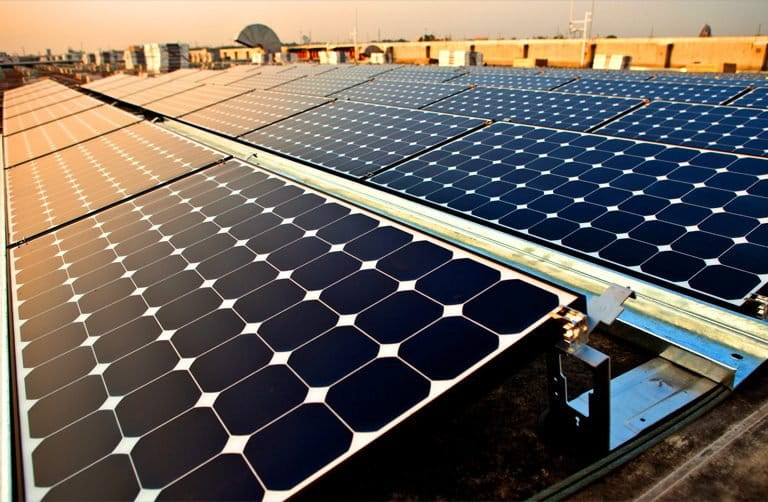- Indonesia’s coal industry is enjoying a resurgence, driven both by rising demand from China — the world’s biggest consumer of the fossil fuel — and a push by the government in Jakarta to build more coal-fired power plants.
- Producers in Indonesia, one of the world’s biggest coal exporters, are seen as maximizing their output in response to the current favorable market conditions, confident that domestic demand will serve as a buffer against another export slump.
- However, activists warn that the coal rush will only hasten Indonesia’s “environmental destruction,” citing the high costs that the mining and power-generation industries have already exacted on both the ecosystem and communities.
JAKARTA —Demand for energy in China and Indonesia continues to drive the resurgence of the latter’s coal industry, setting back efforts in both countries to shift to a greater share of renewable energy.
Mining, freight and trade executives were largely upbeat at what was billed as the coal industry’s biggest event of the year, the 24th Coaltrans Asia, on the Indonesian resort island of Bali earlier this month. Analysts who attended the three-day conference said the outlook in China was still very strong, especially for coal from Indonesia, one of the world’s biggest exporters of the fossil fuel.
Arcandra Tahar, Indonesia’s deputy minister for energy and mines, said the government planned to increase its investment in the coal and minerals sector this year to $6.2 billion. He also told the Coaltrans Asia conference that Indonesia had no plans to reduce coal exports, Reuters reported.
Indonesia’s coal exports are expected to hit 371 million metric tons this year, up 7 percent from last year.
Domestic demand is also driving the boon for Indonesia’s coal producers, thanks to an ambitious government plan to add 56 gigawatts (GW) of electricity capacity across the archipelago by 2027, mostly through the construction of new coal-fired power plants.
Bambang Gatot Ariyono, the energy ministry’s head of coal and minerals, told the conference in Bali that the government had moved beyond seeing coal as just a commodity. “Coal is now seen as a source of energy to support the national industry growth,” he said as quoted by tambang.co.id.

Demand from China
While China has been at the forefront of the global shift to renewables, spending more on domestic renewable energy than any other country, a report by the Global Carbon Project, an international consortium, projected China’s emissions in 2017 jumped by 3.5 percent, after declining by 0.3 percent the year before.
Behind China’s renewed appetite for coal is the robust economic growth in the world’s biggest energy consumer. With the construction of natural gas infrastructure proceeding slower than expected, much of the growing demand for electricity has had to be met by burning more coal. As a result, China’s consumption of coal rose by 0.4 percent last year, the first increase since 2013.
“We often laud China as the new renewables champion, and indeed, if we talk about quantity and scale, no one can beat India and China,” Adhityani Putri, national director of the Center for Energy Research Asia (CERA), a Jakarta-based think tank, told reporters in Jakarta.
“But on the other hand, they’re still adding substantial coal power capacity, and that’s influencing the coal industry dynamic,” she said. “Until India and China truly stop [burning coal], coal will remain attractive.”
The prospects for coal are markedly different from just a few years ago, when the price of the fossil fuel hit a 12-year low in 2015 — the result of a production glut in countries like Indonesia, and a shift to renewables by major consumers such as China and India. The coal price now is at its highest point since 2012.

Domestic drive
The demand from China is good news for Indonesia’s coal producers. But if the export market takes another tumble, they will have a booming domestic market to fall back on this time.
To meet its coal export target, Indonesia aims to increase its production by 5 percent this year, to 485 metric million tons (MMT). If it achieves this figure, this year will mark the fourth in a row that the country’s coal production has exceeded the threshold set by the government in its mid-term national development plan, called the RPJMN.
The plan calls for production to taper down each year, settling at 400 MMT by 2019. Instead, not only has production exceeded the target each year — it has increased every year.
A major factor behind this trend is the growing domestic demand. At present, Indonesia’s coal-fired power plants require about 80 to 90 MMT of coal per year, or roughly 80 percent of the locally mined coal that is allocated for the domestic market.
“Slowly but sure, we’re starting to prioritize domestic needs,” said Bambang, the energy ministry’s coal chief. “Based on the national development plan, the domestic market [for coal] has increased 27 percent each year, and in 2019, we hope it’ll increase by 60 percent.”
Elrika Hamdi, an energy finance analyst from the Institute for Energy Economics and Financial Analysis (IEEFA), a Cleveland, Ohio-based think tank, noted that the 10-year business plan from state-owned power utility PLN indicated it was on a building spree: “there are going to be many new coal-fired plants operating in 2020 and 2021,” she said.
Coal producers, she added, are “trying to dig as much coal as they can while it’s still possible. They’re capitalizing on the moment [when] the coal price is high, with the [Coaltrans Asia] conference saying the price will be stable or even have an upward trend.”

Damper on renewables
The bullish outlook for coal, driven in large part by government policy, could spell trouble for the renewable energy market in Indonesia, which is already struggling to compete with the ubiquitous fossil fuel, analysts say.
Indonesia will miss its target of generating 23 percent of its energy from new and renewable sources by 2025 unless it makes significant policy and regulatory changes, according to a report from the Geneva-based Global Subsidies Initiative (GSI) of the International Institute for Sustainable Development (IISD).
“Many stakeholders we spoke to hold this view and have expressed concerns that the current policies do not provide enough incentive to grow renewables,” Richard Bridle, a senior policy adviser at GSI, said at the launch of the report in March. “More friendly regulations will be a critical first step to boosting renewable energy development in Indonesia and building a business case for investment.”
But right now, the momentum and policy framework are not in favor of renewables — so much so that the coal industry players at the recent Bali conference said they didn’t see renewables as a competitive threat in the Indonesian market.
“While speakers at the conference see renewables as a threat because prices for renewables have declined in the past 10 years, it’s not [considered] a threat for Indonesia,” Elrika said. “Even the government of Indonesia says it will still use coal as the base load power source.”
Bambang said there was no worry about Indonesia depleting its coal reserves, estimated at 13 billion metric tons, in the near term.
“If national coal production is 500 million metric tons per year and no new reserves are found, then Indonesia’s coal reserve will be depleted 26 years from now,” he said.

Climate change, renewables ‘being ditched’
The national government’s attitude to coal is one that’s shared by local authorities, for whom the issues of climate change and renewable energy barely rate a mention in the lead-up to local elections in June, when voters will choose 17 provincial governors, 115 district heads and 39 mayors.
“In the regional election campaigns, not a single candidate has talked about renewable energy,” said Merah Johansyah, coordinator of the Mining Advocacy Network (Jatam), an NGO. “And next year’s presidential election might not talk about renewables either. So this topic is indeed being ditched.”
Merah criticized government policies that he said heavily favor coal for economic reasons and fail to consider its environmental and social impacts.
“First, the industry demands lots of water,” he said, citing the case of the Tanjung Bara power plant owned by PT Kaltim Prima Coal in East Kalimantan province. The plant uses up 12 million liters (3.2 million gallons) of water per month, Merah said — about five times the volume of an Olympic-size swimming pool.
Another environmental impact is the clearing of land for new mines. Across Indonesia, some 440,000 square kilometers (170,000 square miles) of agricultural land has been converted for coal mines, Merah said.
“There’s a potential loss of 6 million tons of rice per year because coal mines operate on agricultural land,” he said.
The mining industry is also notorious for leaving behind open pits after exhausting a given site, despite a requirement that the miners fill them in once they cease operations. Thousands of these abandoned pits are scattered throughout Sumatra and Indonesian Borneo, where they fill up with rainwater and turn into ponds where dozens of people, mostly children, have drowned. According to data from Jatam, the provinces with the most abandoned mining pits are South Kalimantan, with 814, and East Kalimantan, with 779.
Merah said the Coaltrans Asia conference was effectively a gathering to talk about “the continuation of environmental destruction in Indonesia.”
“They only talk about the economy of coal. They don’t talk about the external costs of the coal industry,” he said. “Furthermore, the government only talks with businesspeople through the Coaltrans conference. There’s no room for the public to talk with the government.”
Banner image: A coal mining site in Bengkulu, Sumatra. Photo by Taufik Wijaya/Mongabay-Indonesia.
